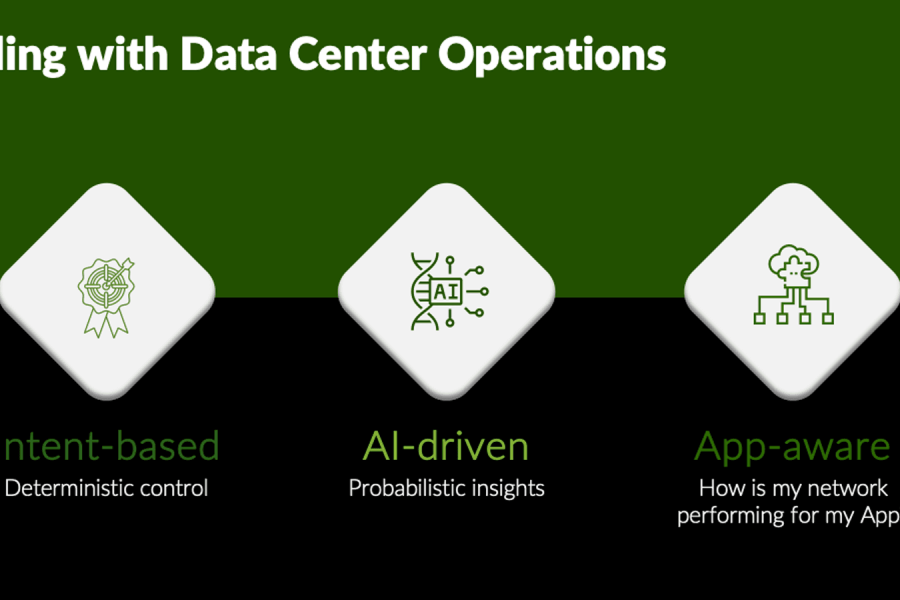This blog was originally published to the 128 Technology website – in 2020, Juniper Networks acquired 128 Technology. Learn more about the acquisition here.
 Mobile network operators are counting on 5G to fuel a new wave of growth. It is nearly impossible to watch an hour of television without seeing a commercial touting the country’s fastest or largest 5G network. The GSMA expects the number of global 5G connections to reach 1.8 billion by 2025. And Grandview Research forecasts worldwide 5G service revenues to exceed $354 billion by 2027.
Mobile network operators are counting on 5G to fuel a new wave of growth. It is nearly impossible to watch an hour of television without seeing a commercial touting the country’s fastest or largest 5G network. The GSMA expects the number of global 5G connections to reach 1.8 billion by 2025. And Grandview Research forecasts worldwide 5G service revenues to exceed $354 billion by 2027.
5G networks will support higher data speeds and throughput rates, offer greater endpoint densities, and provide better reliability, laying the foundation for a wide array of new applications from self-driving cars, to large-scale IoT systems, to UHD video services. 5G services will help MNOs expand markets and grow revenues, but they also introduce architectural challenges for network planners.
5G networks will carry an enormous variety, volume, and velocity of application data and M2M traffic. Legacy 4G wireline transport networks, designed to support best-effort 1 Gbps mobile broadband services, can’t meet the increased performance, scalability, and resiliency demands of the 5G world. Operators must rearchitect their front haul and backhaul networks to support 5G rollouts and fully monetize their 5G investments.
128 Technology Meets Extreme 5G Scalability, Performance and Resiliency Demands
The 128T Session Smart Networking solution is a perfect fit for 5G wireline transport networks. Our solution delivers an adaptable, service-aware fabric that provides high scalability, performance and resiliency for 5G applications and services. We support an extensive collection of security features (zero-trust routing, Layer 3/4 DoS/DDoS protection, payload encryption, and NAT and VPN functionality) to protect 5G wireline transport networks against data breaches and malicious attacks.
Here are five reasons to choose 128T Session Smart Networking for 5G wireline transport networks:
Reason 1: High Performance and Scalability
5G networks will support extremely high data rates (up to 20 Gbps) and extremely high connection densities (up to 1 million devices/km2) introducing extraordinary performance and scalability challenges. 128T Session Smart Networking supports a variety of session optimization and intelligent routing features to ensure high performance and cost-effective scalability for 5G transport networks. We support up to four times the hardware performance of alternative solutions. Our tunnel-free, Secure Vector Routing eliminates the overhead of traditional encryption protocols, improving bandwidth utilization by 40%. And we support a number of additional optimization features to improve data throughput over lossy or latency-prone WAN connections.
Reason 2: Assured Service Quality
5G introduces the concept of network slicing—carving the network into multiple virtual subnetworks that provide different service assurances for different types of applications. 128T Session Smart Networking supports granular QoS controls that let you shape and prioritize traffic to enforce different SLAs for different network slices. For example, you can create a low-latency slice to support autonomous vehicle traffic or a high-bandwidth slice to support a 4K video streaming service. Our application-aware routing intelligently steers traffic based on policies and real-time network conditions, selecting the right network path for the right application at the right time.
Reason 3: High Reliability and Availability
5G data services will be used in critical applications where network disruptions can lead to financial loss, hazards, or even death. 128T Session Smart Networking is designed to provide high availability and continuous connectivity for business-critical and mission-critical 5G applications. We support active-active router configurations that provide stateful failover in the event of equipment problems. And we support multipath session migration to provide persistent connectivity in the event of link failures or network outages.
Reason 4: Ultra-Fast, Persistent Mobility
5G supports mobility speeds of up to 500 km/hr (311 mph), posing unprecedented session routing and management challenges for network architects. 128 Technology uses a unique location-independent, waypoint-based routing approach that provides fast, persistent mobility. Waypoint addresses are independent of UE IP addresses (which can change as users change locations). When a UE moves off one gNB/eNodeB and sends packets from another gNB/eNodeB, the receiving 128T Router automatically detects the UE and preserves the session. Our approach avoids hair-pinning and ensures session continuity and high-speed mobility.
Reason 5: Unmatched Affordability, Manageability, and Simplicity
5G transport network gear is often deployed in unstaffed remote locations like RAN sites. The 128 Technology solution is designed for easy and cost-effective deployment and operation at unattended remote sites. The software-based solution runs on low-cost COTS servers and supports zero-touch provisioning and single-pane-of-glass, centralized management for simple installation, administration, and maintenance. Our tunnel-free routing provides visibility into individual dataflows, so you can monitor sessions, track KPIs and troubleshoot problems, end-to-end. And our Service and Topology Exchange Protocol automatically discovers multi-access edge computing (MEC) nodes and dynamically detects where services are located, so you don’t have to manually update routers when you add, remove or reconfigure MEC nodes.
If your organization is planning a 5G rollout, 128 Technology can help you take on demanding transport network performance, scalability, and reliability challenges with confidence. To learn more download our 5G Wireline Transport Network solution brief.


